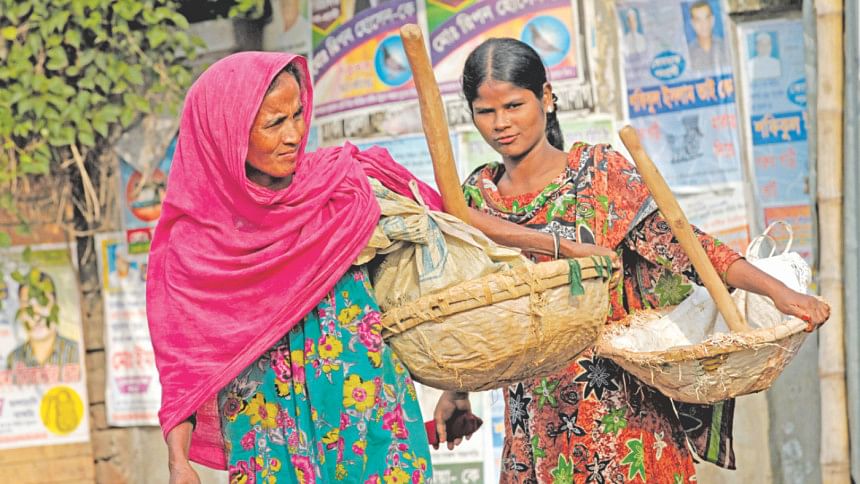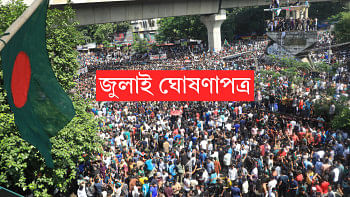Poverty line in Islam re-examines inequality

Every year Forbes puts together a list of the world's richest people, which this year in March revealed 1,826 billionaires with more than $7 trillion in net worth. Bill Gates was found to be the richest person once again, a position he has held for the past 16 out of 21 years, with current total wealth of $79.2 billion.
The search for the poorest people of the world, however, does not reveal much at the individual level. The only name coughed up by the internet for mentionable poverty was of one Jerone Kerviel, ex-Societe Generale trader of France, who owes around $6.3 billion (www.cityam.com) in debt, as published on May 19, 2014.
Now, the question arises on how this measurement of the rich and poor is carried out, and whether it is correct to judge in simple terms of income or is wealth a more suitable yardstick.
International organisations like the World Bank, OECD, and European Union and other major international policy players like the US, have been advocating and drawing the poverty line based on individual income levels to measure absolute and relative poverty. The method is almost universally accepted.
But, what is Islam's perspective on the poverty line? The concept of poverty line, even if not spelled out as 'poverty line', is inherent to the concept of zakat, a fundamental pillar of faith for any Muslim.
The theory of nisab, the minimum net worth that makes a Muslim eligible to pay zakat, appears to have a few advantages over the conventional poverty measuring unit.
The main poverty line used in OECD and the European Union is a relative poverty measure based on economic distance, a level of income usually set at 60 percent of the median household income. The US, in contrast, uses income level on the dollar costs of the US Department of Agriculture's “economy food plan” multiplied by a factor of three in case of measuring absolute poverty.
The World Bank currently defines absolute poverty as income below the international poverty line of $1.25/day (ppp) and moderate poverty as less than $2 a day.
The world's first Millennium Development Goal target was to cut the 1990 poverty rate in half by 2015 and according to most recent estimates, in 2011, just over one billion people lived at or below $1.25 a day, compared with 1.91 billion in 1990 and 1.93 billion in 1981. Nearly 2.2 billion people lived on less than $2 per day.
Despite the significant progress in incomes, the world is yet to address the deep deprivation, another measure of poverty, as the gap between the rich and poor persists, with a lack of access to opportunities.
Deep deprivation has only slight declined from 2.59 billion in 1981, according to World Bank.
Under Islamic law, a Muslim must possess idle wealth equal to the set nisab for at least one lunar year (354 days) for it to become zakatable. If a Muslim has less wealth than the nisab, he or she is exempt from zakat, and even becomes eligible to receive it.
Thus, the two concepts of wealth and possession of wealth for a certain period of time, which reflects capacity and sustainability of possessing the wealth, form the definition of 'rich' in Islam. Or, the 'poor' is defined as possessing wealth less than the nisab value at the time of measurement. This is the poverty line/poverty threshold in Islam.
The nisab is applicable to cumulative stock of dinars, dirham and any other zakatable valuables, such as merchandise that has been in store for at least one year. As long as the total value of the zakatable valuables exceeds the value of the nisab, zakat must be paid.
Now, how do the conventional poverty line and Islamic nisab measure up in demarcating the rich and the poor?
Savings function of income: The saving function relates the level of saving to the level of income where saving is the residual income after a household's consumption. A feature of the function is that it can derive a negative result at low levels of income. Having income greater than the conventional poverty line as defined by the World Bank may also lead to negative saving in developing countries. However, the Islamic poverty line always ensures savings at a minimum standard.
Minimum standard of life: The conventional poverty line cannot always ensure minimum standard of food, clothing, health, shelter, education and other basic needs. Wealth can be only accumulated and retained for long, after fulfilling the basic needs and maintaining minimum standard of life.
Inequality: Fortune, an American business magazine, published an article on October 31, 2014 titled “Wealth inequality in America: It's worse than you think” and highlighted that wealth is about 10 times unequal compared to income among the wealthiest and poorest families in America.
This is a phenomenon common to all countries. The obvious reason behind it can be explained again by another feature of the savings function: if incomes increase savings also increase.
Savings accumulated over time are converted to wealth and the rich can accumulate more whereas the poor cannot save enough to accumulate wealth. In such a scenario, wealth should be taxed and more emphasis should be given to reduce inequality. The Islamic poverty line may help the world diversify the concentration in formulating policy on poverty and poverty reduction from income to both wealth and income.
Inheritance: Most of today's rich inherited the wealth and accumulated further. Conventional poverty line ignores this aspect of inheritance.
Purchasing power parity: Income level at conventional poverty line is corrected to address the price differences across countries through purchasing power parity (PPP). Prices of the goods also vary within a country, like urban prices are not the same as rural prices. Price difference within the country is generally not adjusted and remains static for conventional measures of poverty.
In this perspective, conventional poverty line cannot ensure same standard of life within the country. As savings address both the income and expenditure overtime, nisab automatically inherits the differences of the prices of the goods across or within the countries.
Time of measurement: The wealth of an individual can be measured at any given time for conventional methods, however for nisab to apply the wealth has to be idle for at least one lunar year.
Country asset database: A country can create a database of all assets such as land records, buildings, industries and organisations. So whenever individuals submit tax returns based on both wealth and income, it would be more difficult to evade taxes. If a country can build a strong database, wealth of an individual can be pinpointed at any time.
Sustainable income: Islamic poverty line ensures more sustainable income and standard of living than a conventional poverty line.
Worldwide, the number of hungry people has dropped significantly over the past two decades, even though about 21,000 people die every day of hunger or hunger related causes. Around 805 million people continue to struggle with hunger every day. Yet there is plenty of food in the world for everyone.
Our economic and social policy frameworks should be redesigned not only for food for all but to ensure clothing, shelter, education, health and a poverty-free world, which leads to a search for more equitable taxation, on income as well as wealth. The Islamic determination of wealth and taxable income can help do just that.
The writer is general manager and CTO of Pubali Bank Ltd.

 For all latest news, follow The Daily Star's Google News channel.
For all latest news, follow The Daily Star's Google News channel. 



Comments